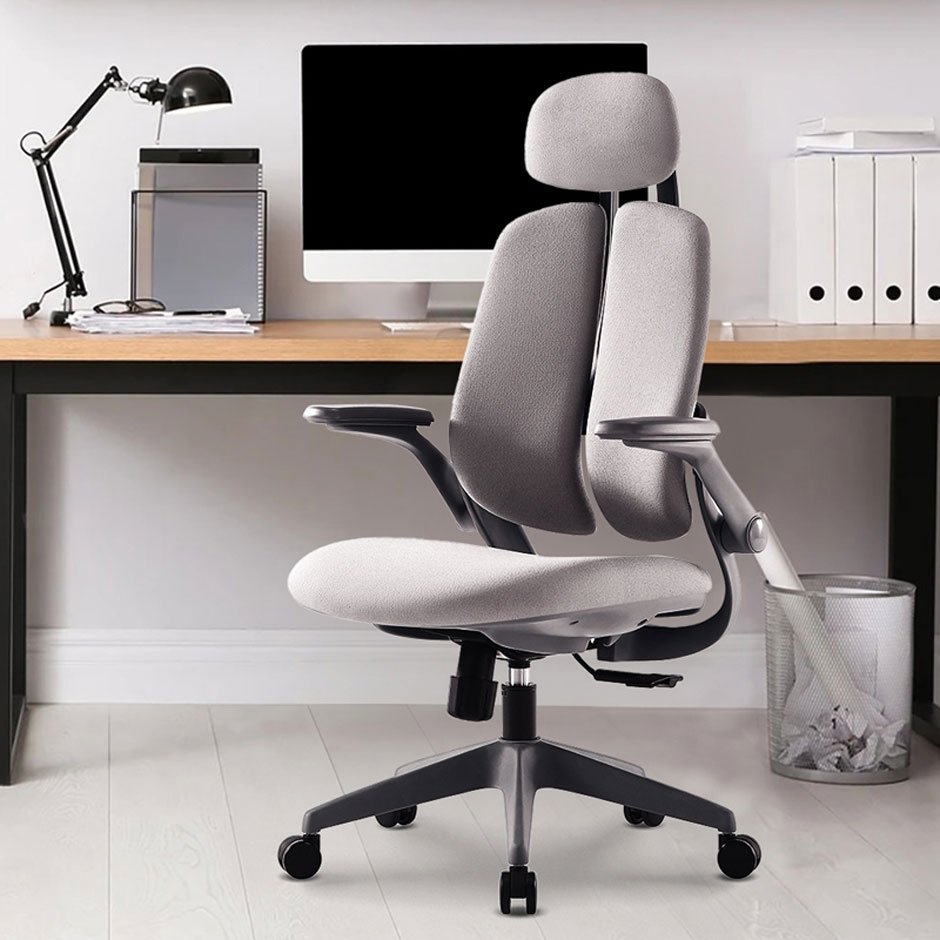 Spending long hours sitting at a desk can tax your body, especially if your chair lacks the proper support. Studies on prolonged sitting have shown that poor posture can lead to serious health issues like back pain and muscle fatigue. Choosing the right ergonomic chair is one of the best ways to improve your posture and comfort while sitting for extended periods. The right chair supports your spine, promotes healthy posture, and reduces strain on your body.
Spending long hours sitting at a desk can tax your body, especially if your chair lacks the proper support. Studies on prolonged sitting have shown that poor posture can lead to serious health issues like back pain and muscle fatigue. Choosing the right ergonomic chair is one of the best ways to improve your posture and comfort while sitting for extended periods. The right chair supports your spine, promotes healthy posture, and reduces strain on your body.
Importance of an Ergonomic Chair
Choosing an ergonomic chair is essential for maintaining a healthy posture. These chairs are designed to support the natural curves of your spine and encourage good sitting habits. Unlike regular office chairs, ergonomic chairs are adjustable, allowing you to find the perfect height and angle for your body.
Proper lumbar support and seat depth also prevent back and neck pain. Over time, an ergonomic chair can enhance your productivity and comfort. So, you can focus on tasks without discomfort.
What to Look for in an Ergonomic Chair
When selecting an ergonomic chair, you should consider several factors to ensure it meets your needs. Check the chair’s height, lumbar and comfort, as they matter the most. It should support the natural curve of your spine and encourage proper posture. Here are some of the features you should double-check:
- Adjustable Height: The chair should allow you to adjust its height so that your feet rest flat on the ground and your knees are at a 90-degree angle.
- Lumbar Support: The chair should provide lower back support to maintain the natural curve of your spine. Look for adjustable lumbar support to fit your individual needs.
- Seat Depth and Width: Choosing an ergonomic chair with a deep and wide seat accommodates your hips. Your thighs should be fully supported, with a slight gap between the edge of the seat and the back of your knees.
- Adjustable Armrests: The armrests should be adjustable in height and width to allow your arms to rest comfortably without straining your shoulders or elbows.
- Backrest Recline and Tilt: A backrest that reclines and tilts can help you find the most comfortable position. It also allows you to shift your posture during the day, reducing strain on your back.
- Seat Material: The material should be breathable to prevent overheating and sweating. Mesh is an excellent option for ventilation, while memory foam padding offers additional comfort.
- Swivel and Mobility: A chair with a swivel function and rolling wheels allow you to move freely around your workspace without straining or reaching.
- Build Quality: Look for a chair made of durable materials that can withstand regular use. A sturdy frame ensures longevity and consistent support.
A sturdy chair will support your weight and frame. Ensure that the material is super comfortable. If your chair has leather or other materials, check that they are breathable and do not cause discomfort after prolonged sitting.
The Role of Material in Ergonomic Chairs
The chair’s material plays a significant role in both comfort and durability. Consider one made of breathable fabric or mesh. These materials allow air circulation, preventing you from feeling too hot or sweaty during long hours of sitting.
Mesh
This breathable material helps regulate temperature and prevent sweating. It is also flexible and moulds to the body while maintaining its shape. This material is durable and easy to clean, making it ideal for long-term use.
Leather
Leather provides a sleek, professional appearance and is known for its durability and resistance to wear. It offers a comfortable, smooth surface that’s easy to wipe down. However, it can be less breathable than mesh, so it’s best for cooler environments.
Fabric
Fabric upholstery is soft and comfortable for long-sitting sessions. It’s available in various colours and textures to suit different preferences. Although it can trap heat, choosing a fabric with a moisture-wicking feature can help with ventilation.
Memory Foam
Memory foam conforms to your body shape, offering personalised comfort and support. It helps reduce pressure points which promotes better posture. It’s an excellent material for those who sit for long hours and need consistent cushion support.
High-Density Foam
High-density foam offers firm support and helps prevent bottoming out after long hours of sitting. It retains its shape over time, ensuring enduring comfort. This material is ideal for those who prefer a firmer seating surface to maintain posture and comfort.
Some chairs also feature memory foam padding, which moulds to your body for added comfort. If you prefer a more classic look, leather upholstery offers a sleek appearance, though it may not be as breathable as mesh.
Making the Right Choice
An ergonomic chair is a long-term investment in your health and comfort. When shopping for one, test it out and make sure it feels supportive. Your chair should provide proper lumbar support, be adjustable to suit your body and help reduce strain on your neck, back, and legs.
When you sit correctly, you’ll experience less discomfort, leading to better focus and improved overall well-being. Prioritise comfort and support. Choosing an ergonomic chair promotes good posture, reduces pain, and increases comfort throughout the day. This simple step can make a big difference in how you feel while working and long after you’ve finished.




Leave a Reply